Co-existing with disasters
Few people know that there are disasters hidden under green trees and newly-built tiled houses in Quang Binh and Quang Tri Provinces. These disasters lurk from the bombs and mines left from the war.
We met Ngo Xuan Hien, a cadre of the Project “Restoring the Environment and Neutralizing the Effects of the War” (RENEW), a co-operation project between Quang Tri Province People’s Committee and the Vietnam Veterans Memorial Fund (VVMF). He said: “I am still frightened. Recently a 105mm shell exploded in the yard of the Nguyen Hue Secondary School in Dong Ha City while over 500 students were having classes. Fortunately nobody was wounded. Most glass doors and windows of the three-storey school were broken.” Not long ago, at ward 4 in Gio Linh Town, Gio Linh District in Quang Tri Province, little Duong Nhat Binh picked up a strange object in a canal near his house. While he played with the object it exploded and injured him seriously.
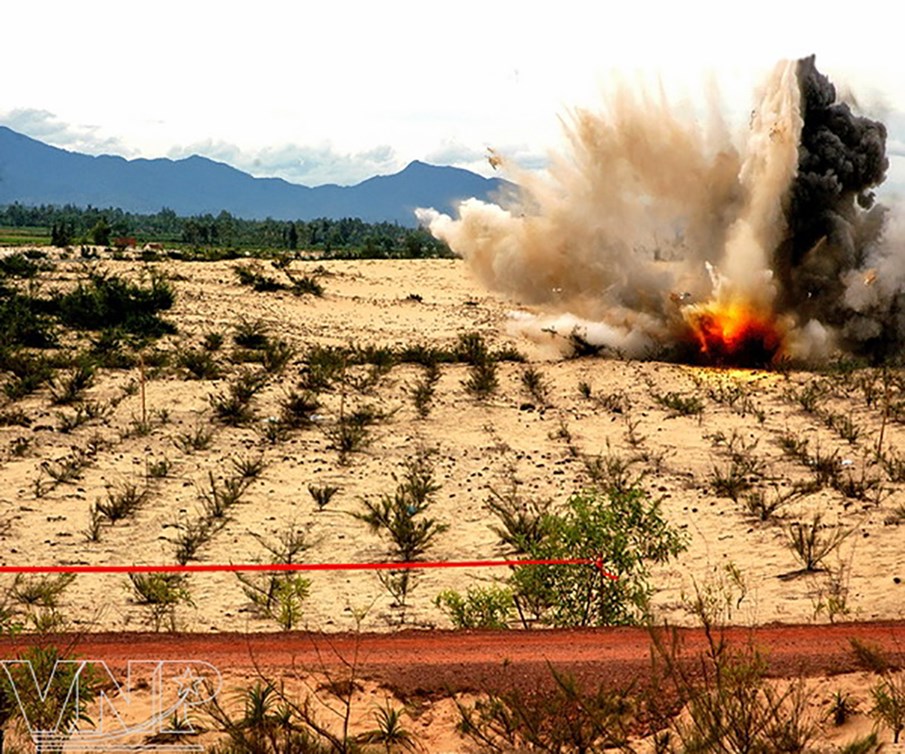 |
Nearly 40 years after the war ended there are still many dead areas caused by bombs and mines in Vietnam.
Photo: MAG Vietnam |
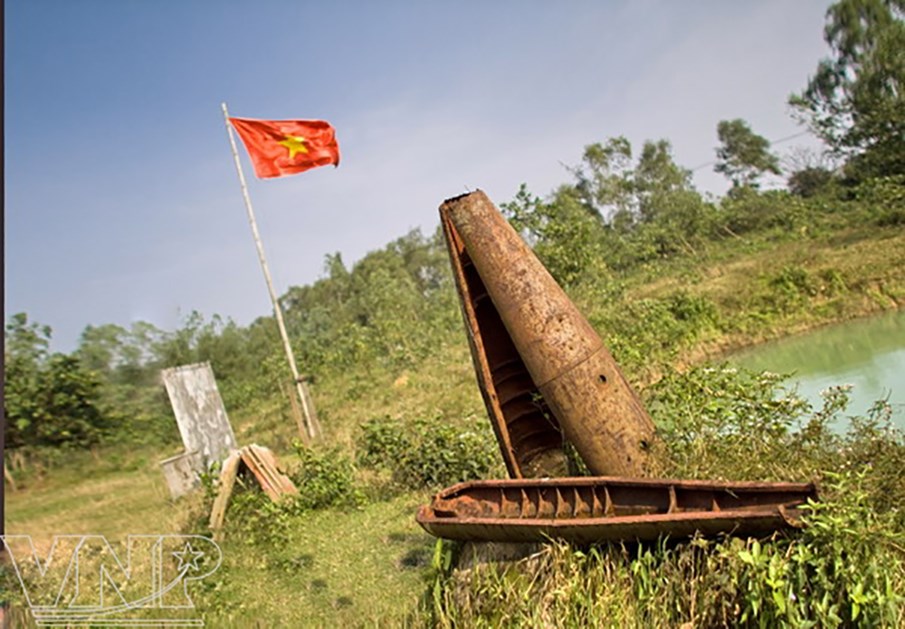 |
Many areas in Vietnam still have wreckage from the bombs left over from the war. Photo: MAG Vietnam
|
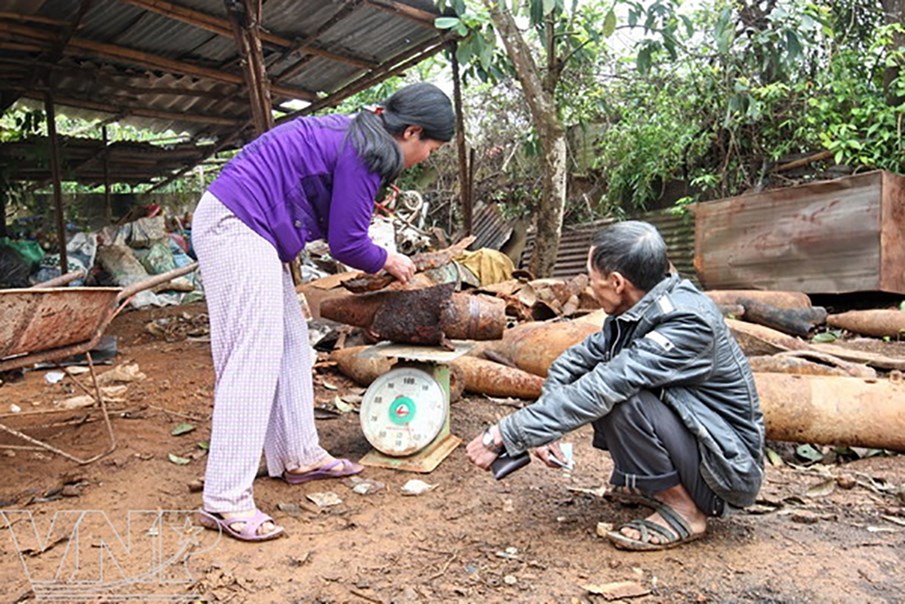 |
Risks are hidden during the purchasing of waste materials from unexploded ordnance. Photo: Hoang Quang Ha
|
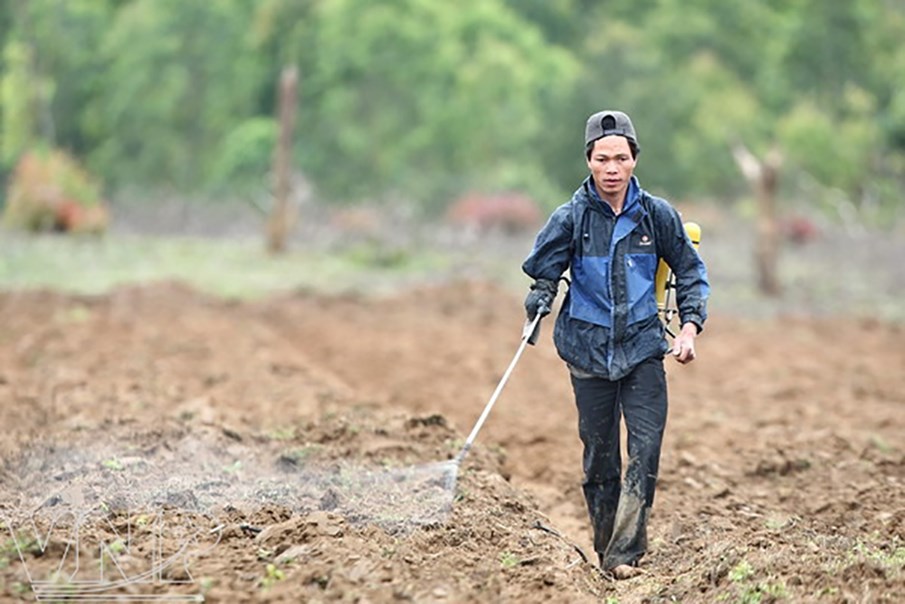 |
| Ho Minh Tien in Quang Tri Province has lost an arm and an eye and suffered a pierced intestine caused by an M79 shell left from the war. Photo: Hoang Quang Ha |
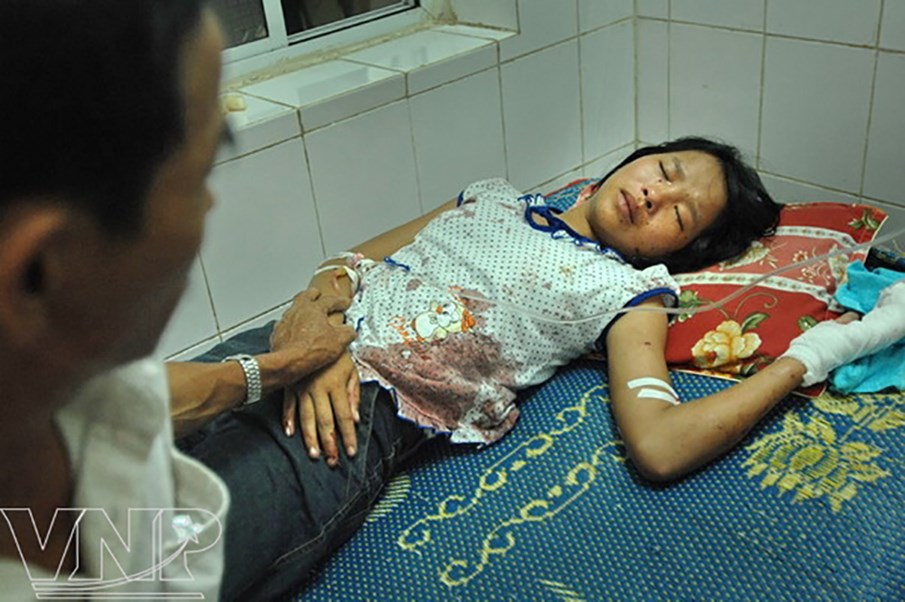 |
| This woman wounded by BLU bomb. Photo: MAG Vietnam |
The bomb and mine-contaminated situation in Quang Binh Province is also serious in Quang Tri Province. We followed a community liaison team of the Mines Advisory Group (MAG) to visit Nguyen Viet Tai’s family in Hamlet 2 in Quyet Tien Commune, Le Ninh Farm Town in Le Thuy District. Tai said: “There are many mines in the fields and gardens. Careless hoeing can easily make them explode, causing heavy casualties.”
According to a survey carried out for five years in six central provinces by the Vietnam Veterans of America Foundation (VVAF) and the Technology Centre for Bomb and Mine Disposal (BOMICEN) under the Vietnamese Ministry of National Defence, since 1975 Vietnam has over 38,000 people dead and over 100,000 people injured by landmines left from the war.
According to estimates by the US Department of Defence, during the Vietnam War the US army used over 15 million tonnes of bombs and shells, four times as much as the total bombs and shells used by other countries in World War II.
Over 35 years after the war ended in1975, there are still nearly 800,000 tonnes of mines and unexploded ordnance left in an area of about 6.6 million hectares which accounts for over 20% of the country’s total area. They are mainly concentrated in the central provinces.
It is noteworthy that most of these mines and unexploded ordnance lie in the fields and gardens. They have become rusty and can explode at any time, posing risks to the local people, children and farmers.
Bomb and mine accidents still occur today, causing casualties and injuries to many people. Sad stories caused by them are haunting the people in affected areas.
Joining efforts to clear bombs and mines
After 1975, Vietnam promptly carried out many mine clearance campaigns in targeted areas to release reclaimed land for the local people to resettle and resume farming to stabilise their life. However, these campaigns only focused on detecting and removing mines and unexploded ordnance lying at a depth of about 30cm underground and in the areas for farming and construction.
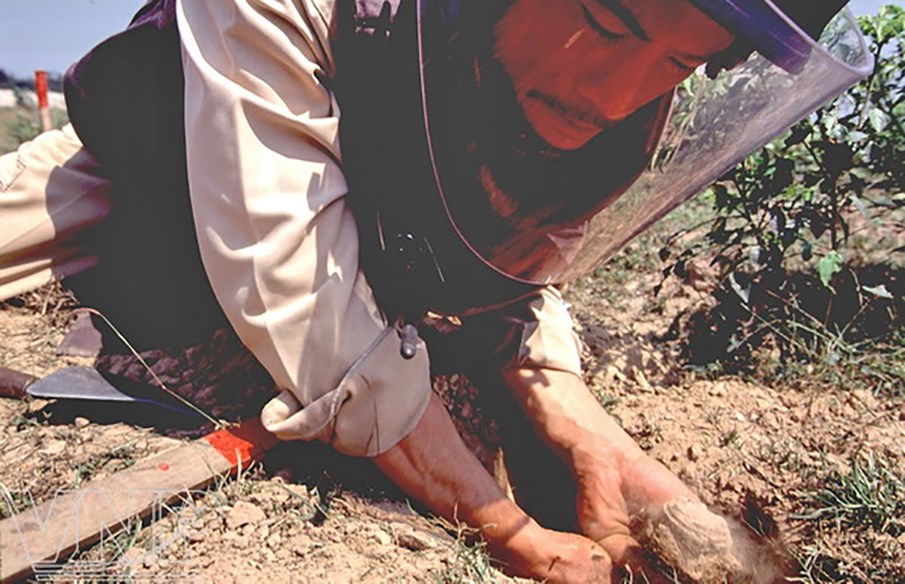 |
A technician deals with an unexploded object. Photo: MAG Vietnam
|
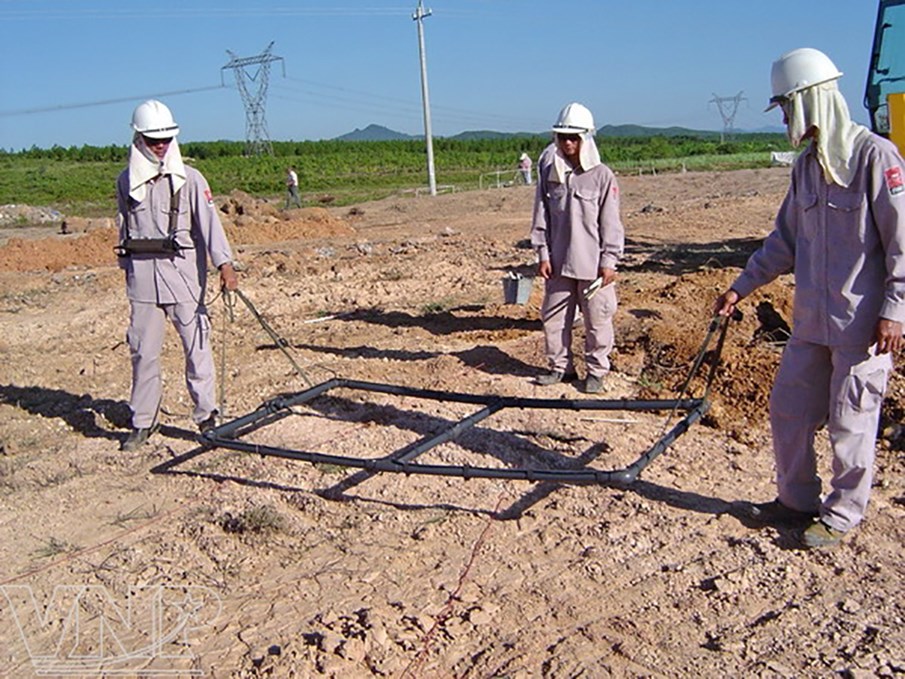 |
| A bomb and mine detecting and clearing group search for unexploded ordnance. Photo: MAG Vietnam |
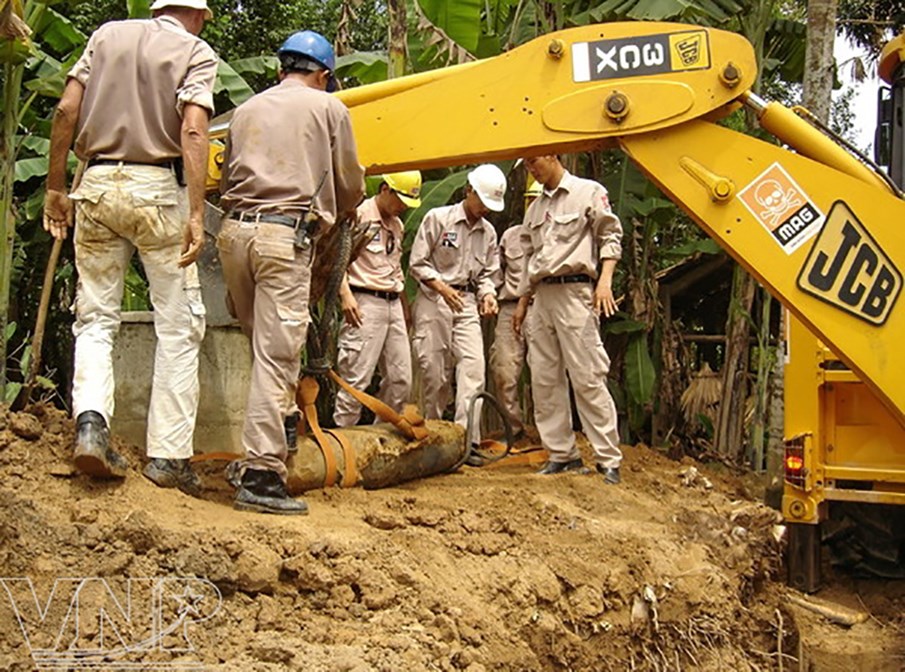 |
Detecting and clearing bombs and mines in a residential area. Photo: MAG Vietnam
|
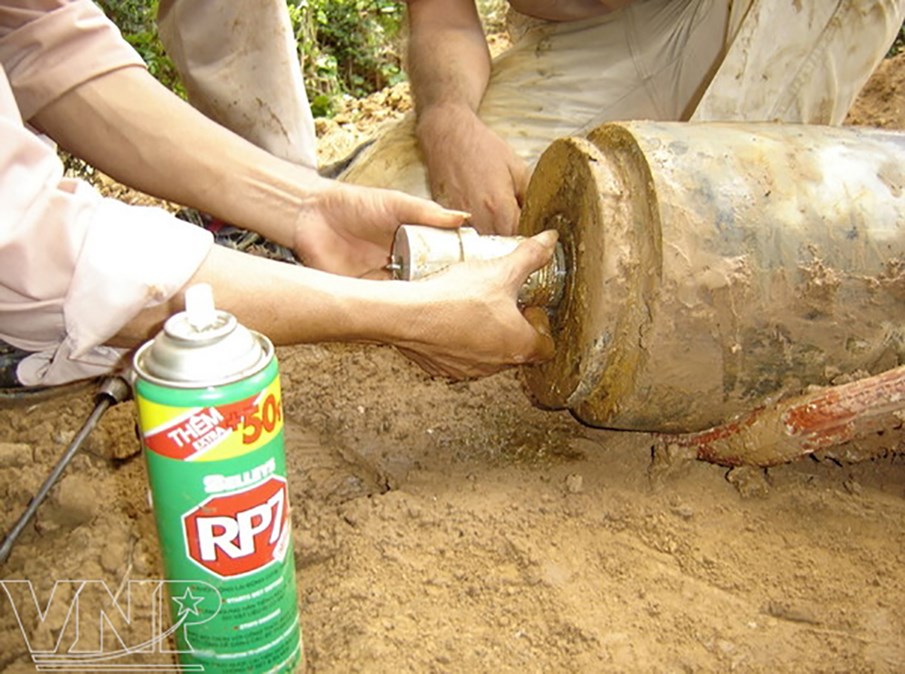 |
Defusing a bomb. Photo: MAG Vietnam
|
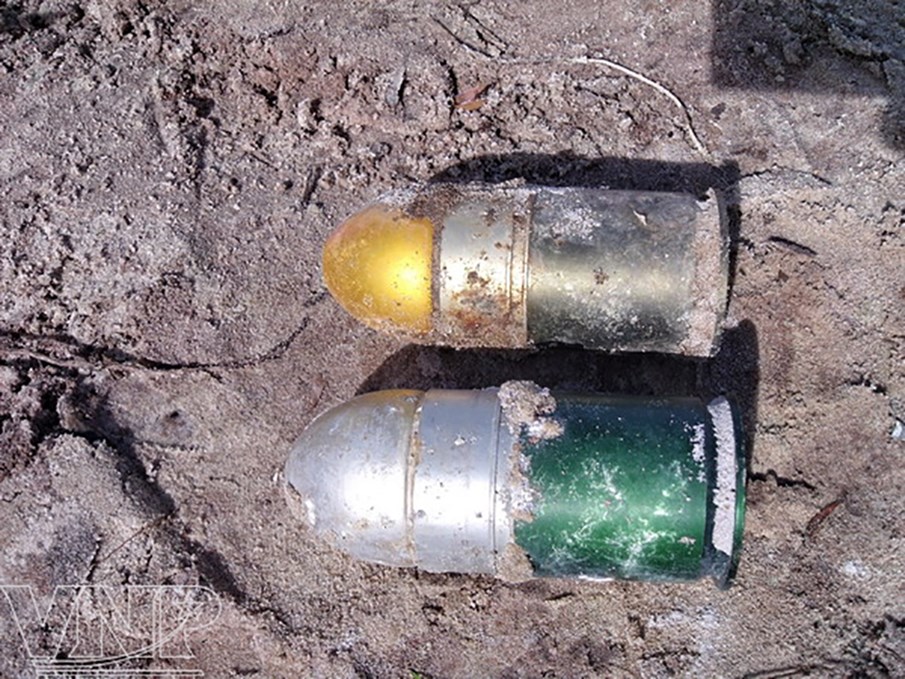 |
| Some unexploded ordnance which has been collected during the bomb and mine clearance. Photo: MAG Vietnam |
|
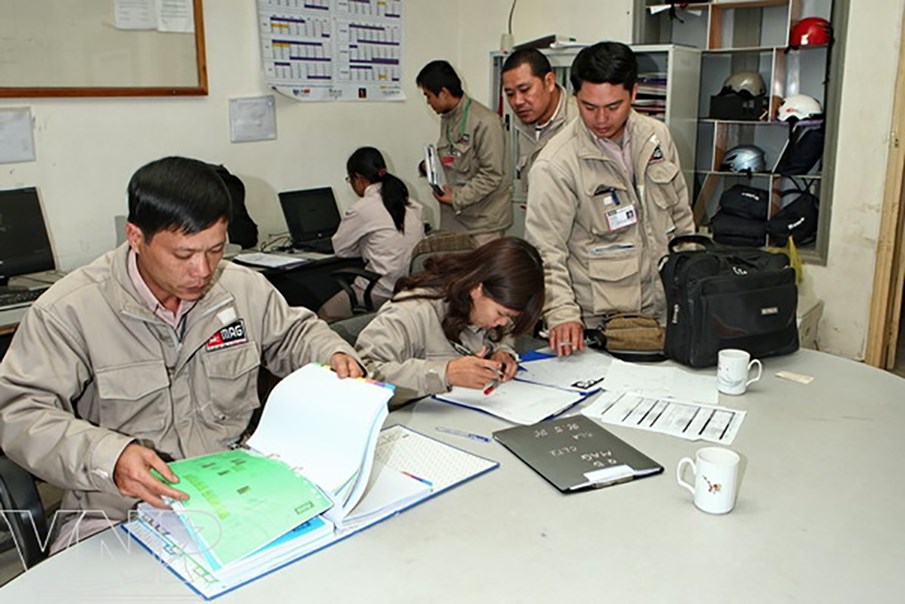 |
Members of a MAG team summarize the bomb and mine contaminated areas in Quang Tri Province.
Photo: Hoang Quang Ha
|
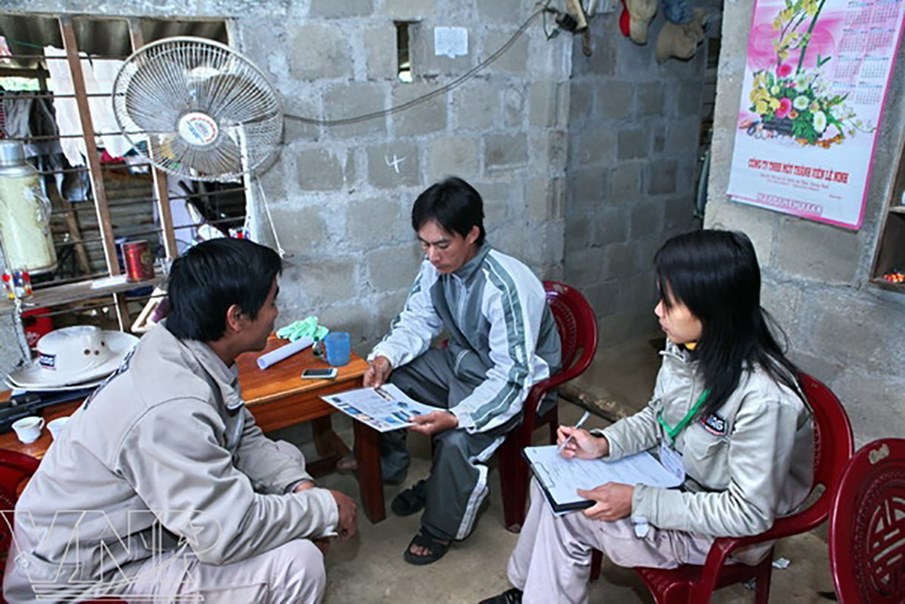 |
Members of the community liaison group collect information from the local people about unexploded ordnance in Quang Binh Province. Photo: Hoang Quang Ha
|
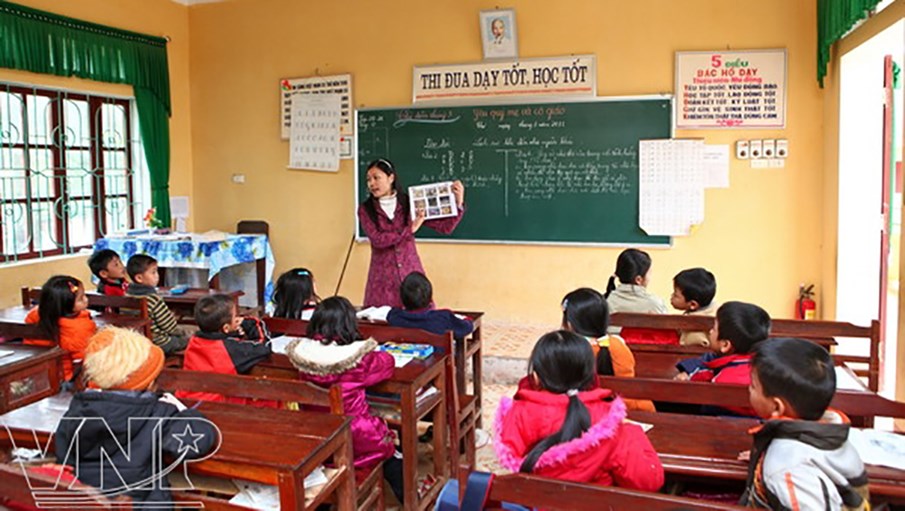 |
A teacher at Le Ninh Primary School (Quang Binh Province) instructs her pupils on how to identify the bombs and mines.
Photo: Hoang Quang Ha |
In the late 1980s, and especially in the early 1990s, groups of American veterans who had participated in the battles in Vietnam returned to this land. They were astonished at the changes and development here. However they could not believe that the problem of mines and unexploded ordnance was still so serious. Therefore they not only called upon the world to support Vietnam but also carried out projects on detecting and clearing mines in Vietnam.
American veteran Chuck Searcy who participated in the battles in Vietnam is now VVMF Chief Representative in Hanoi. He said: “War is a sad memory. Being a veteran who participated in fighting in Vietnam I understand the terrible consequences of the war. What has happened cannot be redeemed, but we can undertake reconstruction on the ashes of the war and build hope for the future to better understand each other.” So far, many domestic and international organizations have carried out campaigns to help Vietnam in clearing mines and unexploded ordnance in heavily contaminated areas.
The mine clearance activities have received enthusiastic support from a contingent of collaborators who are local. Nguyen Van Nuoi, a buyer of wasted iron in Xuan Mai Hamlet of Gio Binh Commune, Gio Linh District, Quang Tri Province said: “Every day I buy nearly one tonne of waste material in which there are many types of rusty mines and unexploded ordnance. I collect them and inform the MAG team to dispose of them safely.”
According to research under the RENEW Project which was undertaken in Quang Tri Province, children under the age of 16 account for 31.5% of the total mine victims. So it is very necessary to make the children aware of the bomb and mine threats. The humanitarian projects on mine and unexploded ordnance which are being implemented in Quang Binh and Quang Tri Provinces have closely collaborated with the local authorities to carry out many programmes on educating people how to prevent and avoid bombs and mines. They particularly focus on enhancing the children’s awareness of bomb and mine threats and minimizing regrettable accidents.
Apart from detecting and clearing unexploded ordnance, providing information and educating people, the mine clearing organizations undertake other activities, such as caring for the victims and restoring their means of subsistence. They also help in building local healthcare facilities, upgrading the medical equipment, creating jobs, increasing the income of the victims’ families, rehabilitating the victims and integrating them into the community. A typical example of these activities is the programme titled “Mushrooms with a Mission”. It is a co-operation programme between the RENEW Project and the Humpty Dumpty Institute (HDI) to provide technical assistance to mushroom growing for hunger elimination and poverty reduction. The programme has helped nearly 150 mine-affected households in Trieu Phong District, Quang Tri Province to develop the economy for hunger elimination and poverty reduction.
Efforts to revive
Reality shows that the activities of clearing mines and unexploded ordnance have resulted in positive changes in the local socio-economic development in the targeted areas. In the areas which have been cleared of unexploded ordnance in Quang Binh and Quang Tri Provinces, schools, healthcare centres, community houses and residential houses have been built. There are also rice fields, flower gardens, fish ponds and rubber plantations.
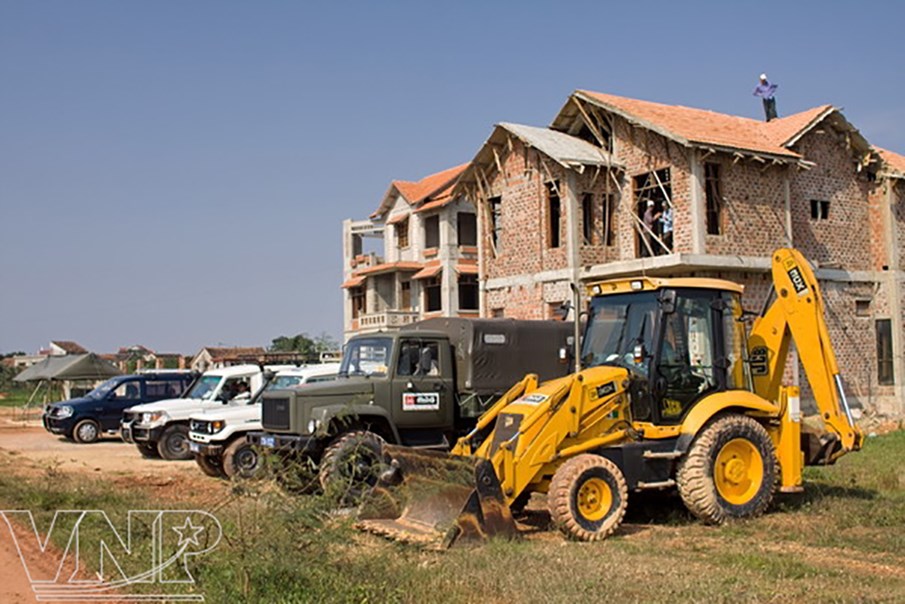 |
A new settlement area on the land which has been cleared of bombs and mines. Photo: MAG Vietnam
|
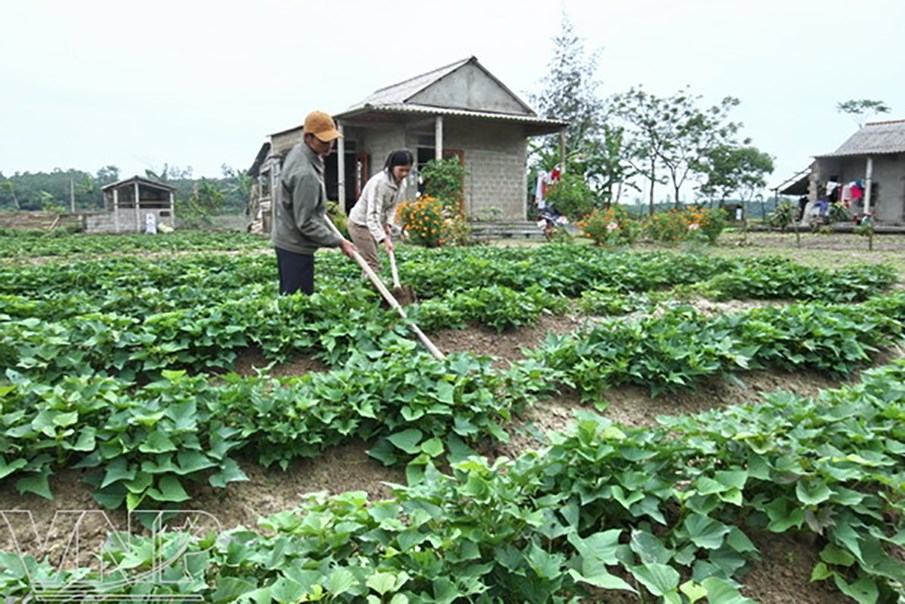 |
New life for the residents in Gio Linh District (Quang Tri Province). Photo: Hoang Quang Ha
|
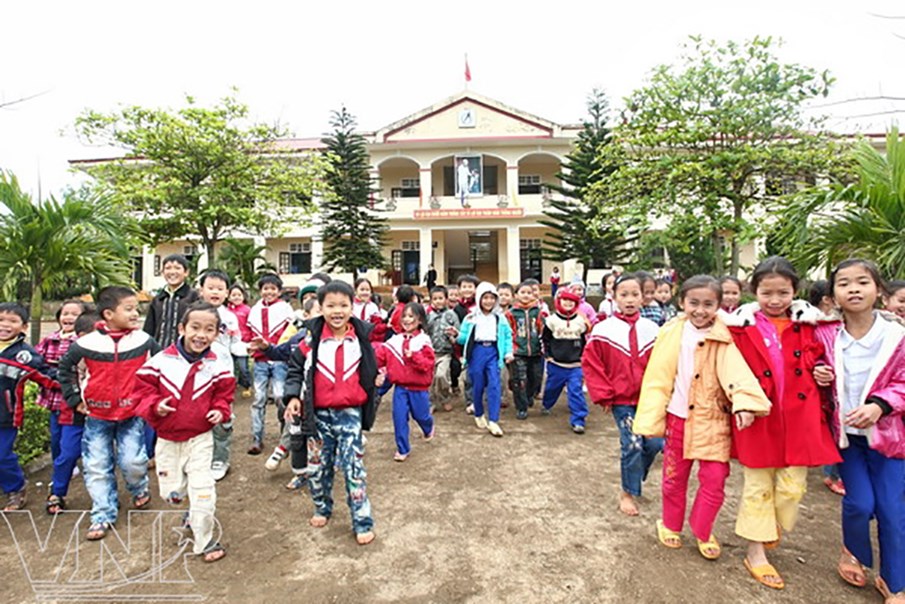 |
| Le Ninh Primary School (Quang Binh Province) on cleared land. Photo: Hoang Quang Ha |
 |
| Children in an area where unexploded ordnance has been removed. Photo: Hoang Quang Ha |
Truc Lam Hamlet in Gio Quang Commune, Gio Linh District was the most severely affected by bombs and mines in Quang Tri Province. Thanks to the bomb and mine clearance programmes, the life of the local people has changed greatly. After removing all mines and unexploded ordnance in this area, MAG built a resettlement area for people. Nguyen Van Cu, a villager in the hamlet said: “There are no longer bomb or mine accidents. MAG has detected and cleared all unexploded ordnance and provided assistance in electricity and water, helping the local people to do business.”
In Le Thuy District, Quang Binh Province, after detecting and clearing 696 bombs, MAG granted 230 million VND for building Le Ninh Primary School, contributing to the programme on consolidating the schools and creating favourable conditions for children to study in the area.
However, solving the problem of bomb and mine contamination in Vietnam will be time-consuming and costly. According to Colonel Nguyen Trong Canh, Director of the Technology Centre for Bomb and Mine Disposal, it will take Vietnam another 300 years and about 10 billion USD to clear all remaining bombs and mines in Vietnam.
That’s why, apart from its own efforts, Vietnam is calling on international organizations to help the country expand the targeted areas, accelerate the bomb and mine disposal and solve the problems caused by bombs and mines to stabilise the life of the local people.
It may be said that the consequences of the bombs and mines left from the Vietnam War is a sad story without an end. It is not only the story of the Vietnamese people but has also attracted special attention from world opinion. Chuck Searcy has stayed in Vietnam to work for 10 years although he originally planned to stay for three years. Answering the question of a correspondent of NBC News (US) why he prolonged his stay in Vietnam he said: “I love this country and people but more importantly my work is not complete.”